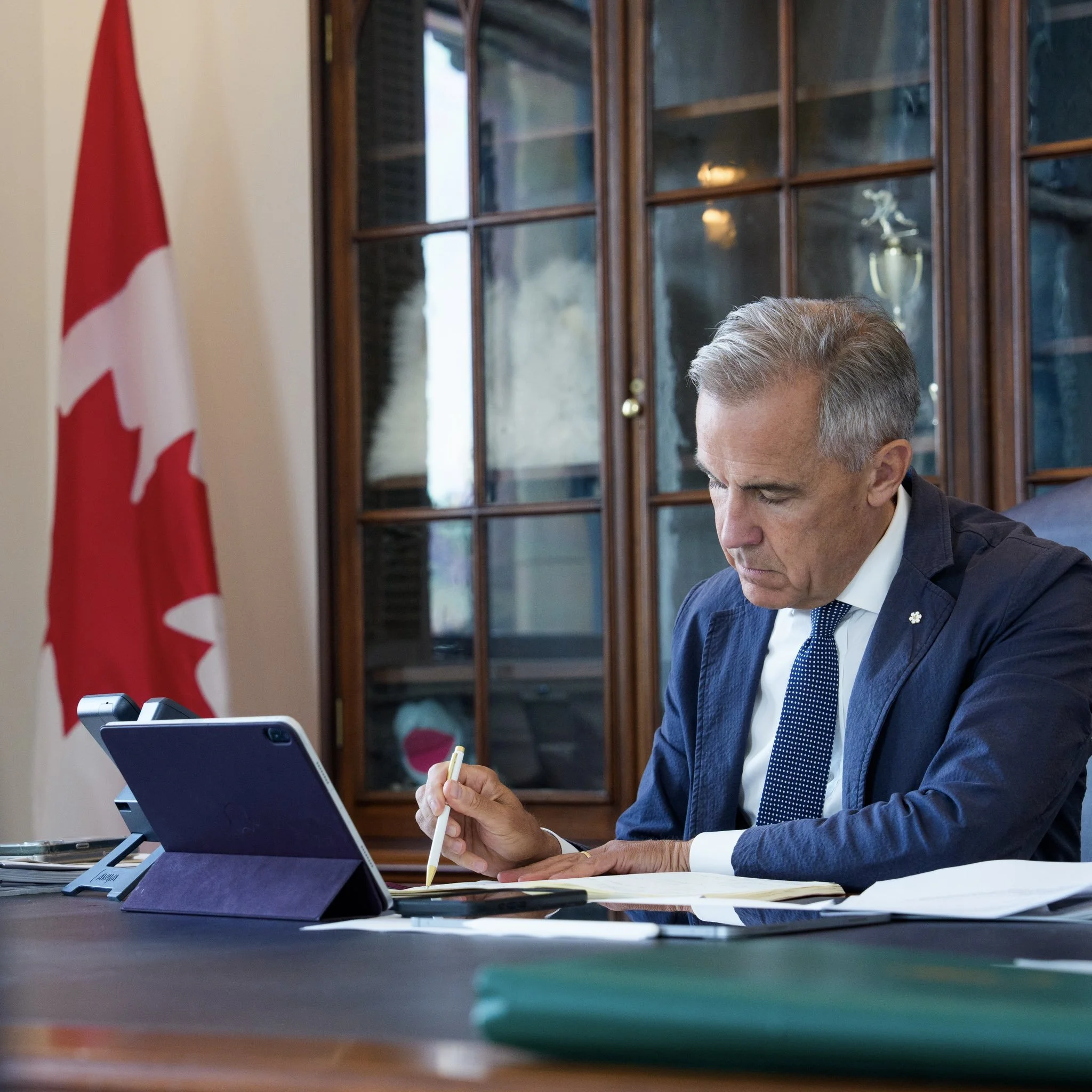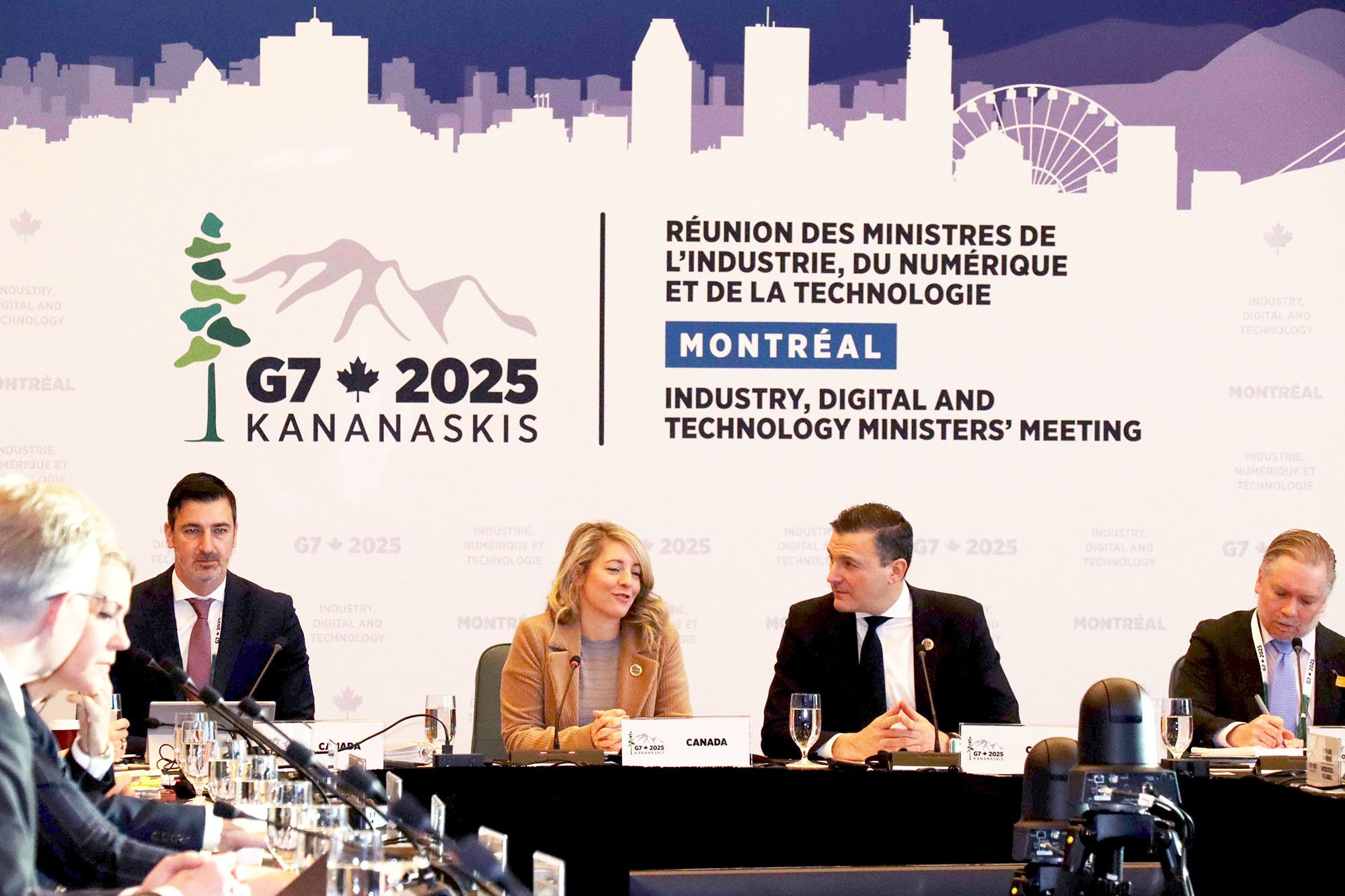After the first 100 days, now the real work begins
Prime Minister Mark Carney, pictured in his office speaking to UK Prime Minister Keir Starmer. Aug. 6 marked the Liberal government’s first 100 days in office. / TWITTER PHOTO
In Canadian politics, 100 days is an arbitrary milestone — symbolic more than substantive. Still, the milestone which has more prominence in the U.S. offers a useful window to evaluate tone, direction and early choices of a newly elected government. For Prime Minister Mark Carney, Aug. 6 marked those first 100 days.
Canada faces overlapping economic pressures: a deepening trade war, sticky core inflation, rising defence demands and an increasingly fragmented global order. So far, Carney’s government has stickhandled relatively well. Moreover, Carney himself has emerged as a steady, pragmatic leader.
But the next 100 days and beyond will be even tougher. The Canada-U.S. trade relationship is at its lowest point in decades, and the economic uncertainty hanging over Canadian businesses is worrisome. Symbolism and restraint won’t be enough. The country is demanding — and will require — bolder action.
Carney took office during a period of economic fragility. While inflation has cooled from its peak, it still remains above the Bank of Canada’s 2% target. The Bank has held its policy rate at 2.75%, citing trade uncertainty and persistent inflation.
To be fair, the economy’s resilience is a testament to both macroeconomic prudence and luck. Consumer spending is holding up, home resales have rebounded modestly and job growth remains stable. But the Bank of Canada expects GDP growth to remain below potential for at least another year, in part due to the tariffs now rippling through Canadian industries.
As former Parliamentary Budget Officer Kevin Page warns, this moment may be “the calm before the storm.”
The trade war that won’t go away
Without question, Carney’s biggest test has been the deteriorating trade relationship with the U.S. On Aug. 1, after months of negotiations failed to yield an agreement, President Donald Trump imposed a blanket 35% tariff on Canadian goods not already covered by the CUSMA trade deal. The move represents a significant escalation.
While Carney rightly noted that the impact is “largely symbolic” due to the fact that more than 90% of Canadian exports are CUSMA-compliant and remain tariff-free, the gesture itself has had chilling effects. Uncertainty is the enemy of investment. Canadian SMEs are particularly vulnerable — not least because Trump scrapped the $800 U.S. de minimis exemption for Canadian goods, a move that guts cross-border e-commerce and adds new costs for small exporters.
Meanwhile, Mexico — which has been granted a 90-day reprieve from similar tariffs — is being rewarded for what Trump claims is “constructive dialogue.” The optics, for Ottawa, are bad.
In an attempt to keep “elbows up,” Carney has emphasized continued dialogue, reiterated Canada’s commitment to CUSMA and reassured affected sectors — especially lumber, steel, and autos — that the government would invest in industrial competitiveness, “Buy Canadian” policies and export diversification.
This week, the government announced a $1.25 billion support package for the softwood lumber industry.
That’s a good first step, but without tangible support programs and fast-tracked relief for impacted workers and businesses in other affected sectors, the message risks ringing hollow.
Some stumbles
Carney’s government stumbled in its rollout of Bill C-5, the Building Canada Act. While intended to spark economic growth and create shared prosperity with Indigenous communities, many First Nations leaders have criticized the process as rushed and paternalistic.
In response, the government announced an Indigenous Advisory Council, pledged $40 million for community engagement and doubled the Indigenous Loan Guarantee Program to $10 billion. But Carney’s insistence that recent meetings constituted “engagement, not consultation” underscored the gap between federal intention and Indigenous expectations.
If Carney hopes to build national infrastructure at speed, he’ll need to rebuild trust — and quickly.
Carney’s election also raised expectations for bold climate leadership. As the UN Special Envoy on Climate Action and Finance, he consistently emphasized the financial opportunities of transitioning to net-zero emissions. “Climate change is an existential threat,” he has said, adding that “those who are part of the solution will be rewarded. Those who are lagging behind … will be punished.”
He’s spoken passionately about aligning private finance with climate goals, urging mandatory carbon disclosures, calling for investment in green value chains and championing adaptation financing in developing countries. “We all have a role in this adjustment,” he told the UN, urging citizens to ask tough questions of their banks and elected officials alike.
Yet Carney’s first act as Prime Minister was to cancel Canada’s consumer carbon tax. While the move may score short-term political points amid a cost-of-living squeeze, it raises questions about his willingness to act decisively on climate in the face of economic and political pressure.
His rhetoric remains globally ambitious — but Canadians may rightly ask: is he prepared to apply those same standards to his own government’s decisions?
What’s next?
Canadians and the business community will be watching closely in the weeks and months ahead. Here’s what they should look for:
⮕ A deal with Washington on Canadian terms
The core challenge remains the same: navigating Trump’s unpredictable trade policy without capitulating. Canadians don’t expect magic. But they do expect smart, firm and results-oriented diplomacy. The right deal is better than a rushed one.
⮕ Export diversification strategy
“Buy Canadian” is fine as a rallying cry. But for long-term economic resilience, the government must accelerate efforts to diversify export markets.
⮕ An economic resilience agenda
In addition to trade-specific measures, the government must roll out a broader plan to foster innovation, improve productivity, and support small business competitiveness.
⮕ Follow-through on Indigenous engagement
If Bill C-5 is to stand, it must evolve. Indigenous peoples must help shape — not just comment on — project priorities. Without legitimacy, fast-tracked projects will hit legal and political gridlock.
⮕ Signals on fiscal and climate policy
Investors and communities alike are watching for the fall budget. Will Carney’s green credentials translate into tangible climate investments?
The first 100 days don’t matter if we’re measuring them against fully solving the major problems our country faces. However, they do tell us whether a leader is up to the task.
So far, Carney is. But the real test starts now.






